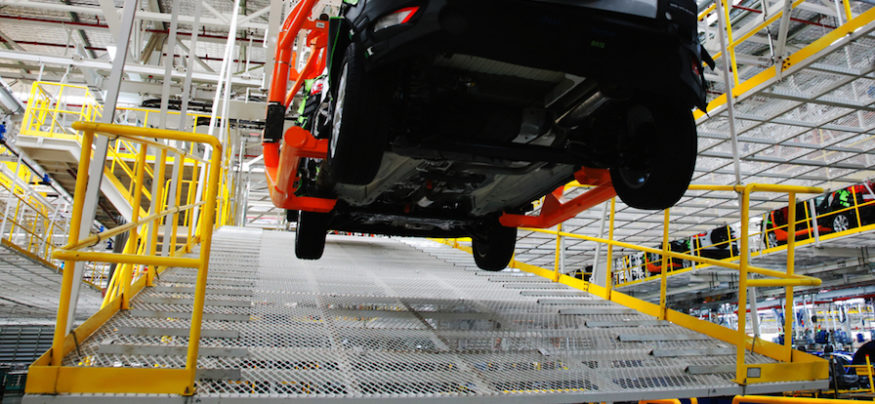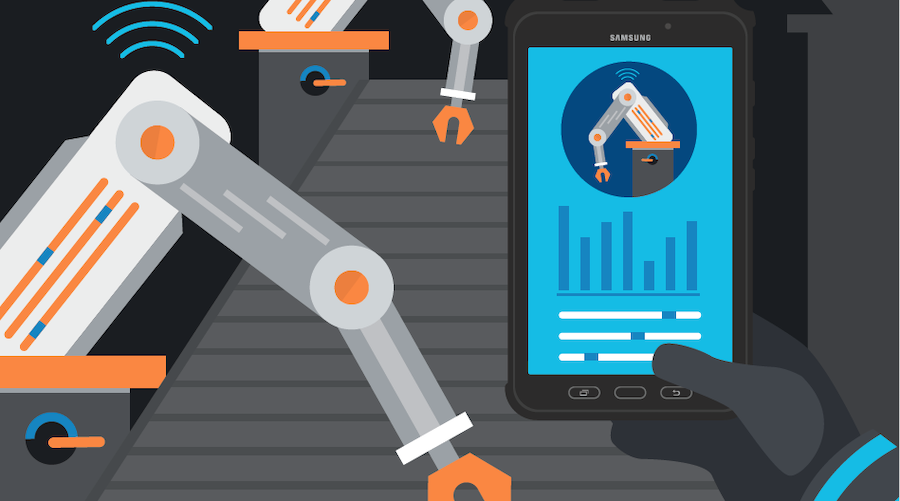In today’s competitive manufacturing landscape, companies are feeling the pull from customers’ exacting demands, a fragmented global supply chain, a rapidly aging workforce, and increasing calls for green and sustainable practices.
Lean manufacturing, which is founded on the concept of the smart factory, transforms these challenges into advantages. The manufacturing technology of tomorrow will hinge on lean, digital solutions. In the next Industrial Revolution, Industry 4.0, digital is not an afterthought to be applied as a salve in case things go wrong; it requires a complete rethink of the manufacturing process from end to end, creating a physical-digital-physical loop.
As with most promising technologies, however, the companies that approach the solution in a measured fashion, without running in blind, will reap the greatest benefits. Here are a few Dos and Don’ts that serve as blueprint for manufacturing companies to work with.
Do: Set SMART goals. Especially true with any long-term endeavors, manufacturing companies need to ensure the lean manufacturing initiatives to be implemented are Specific, Measurable, Attainable, Realistic and Time-based. “The entire production floor will be lean in a year” is not a SMART goal. It’s not specific, there are no metrics laid out and it might not even be realistic. Set measurable KPIs. “We will decrease the pick-to-ship cycle time by 15 percent in the next 12 months” is an example of a SMART goal.
Don’t: Fall in love with processes. Companies should remember the end goal when planning on lean manufacturing initiatives. Stakeholders shouldn’t get so wedded to processes that they become difficult to change if needed. After all, a true smart factory is agile and ready to adapt to changing conditions.
Do: Insist on transparency. You can’t change something you can’t see. Companies should insist that every aspect of the manufacturing process from warehouse operations to quality control and asset management be fully documented. It’s equally important that employee mistakes that come to light as a result of such documentation aren’t penalized. Such punishments can deter the creation of a transparent culture, which is a cornerstone of lean manufacturing.
Modernize Your Factory With Mobile
Get your free guide to the mobile technologies that will accelerate your smart factory journey. Download Now
Don’t: Overlook governance. The smart factory will need complete buy-in from the C-suite. After all, the principle of lean manufacturing is that the processes will self-optimize over time. This has the potential to upset the apple cart in the short term, so management must create a new governance model, where processes are decentralized and more employees are empowered to make data-driven decisions.
Do: Make your operations people-centric. A recent Forrester report sounds a warning bell: Manufacturing firms are stuck in the age of the product. Only 22 percent of more than 1,000 decision-makers at global manufacturing firms reported that they are increasing customer input into the design of products and services. The future of manufacturing lies in placing customers at the center of the lean manufacturing transformation, and agile processes which deliver stellar experiences will come out ahead.
Don’t: Sideline employees, either. A people-centric approach to a smart factory should also focus on employees. Many might have tribal data about legacy equipment, and their input should be sought out as part of the reboot. Involving employees in the rehaul will also increase a sense of ownership about final outcomes.
Do: Invest in resources. IIoT (Industrial Internet of Things) data and low latency computing drive the smart factory. A preliminary process audit might reveal many areas where digitization can drive KPIs in the right direction. Consultants and operations management professionals from sensors on production floor equipment can be analyzed by asset management apps such as IBM Maximo, backed by the computing power of top-tier smartphones like the Samsung Galaxy Note9, which doubles as a desktop with DeX mode. These can enable machine learning predictive maintenance models which can keep asset turnover rates low. Similarly, the rugged Samsung Tab Active2 or J-Series when used as barcode or QR code scanner on can revitalize inventory management by tracking the movement of goods and products in real time. A smart factory will invest in the right technologies upfront and realize value over time.
Don’t: Let data be king. This might sound counterintuitive, but smart factory leaders will learn which data points are worth measuring and how best to analyze the data. The garbage-in, garbage-out theory still holds true in data analysis, so companies need to ensure they’re gathering real-stream analysis of the right data, using the right devices to compute and analyze the data, and assigning the right people to act on those insights. Big Data is an important ally in the smart factory of the future, but it’s the insights derived from that data that make people smarter.
The right strategies can put manufacturing companies in the driver’s seat as they take the on-ramp to Industry 4.0. And mobile technology is one of the primary fuel assets that will facilitate this innovation.
Learn more about using mobile technology to modernize your factory with our free white paper.








